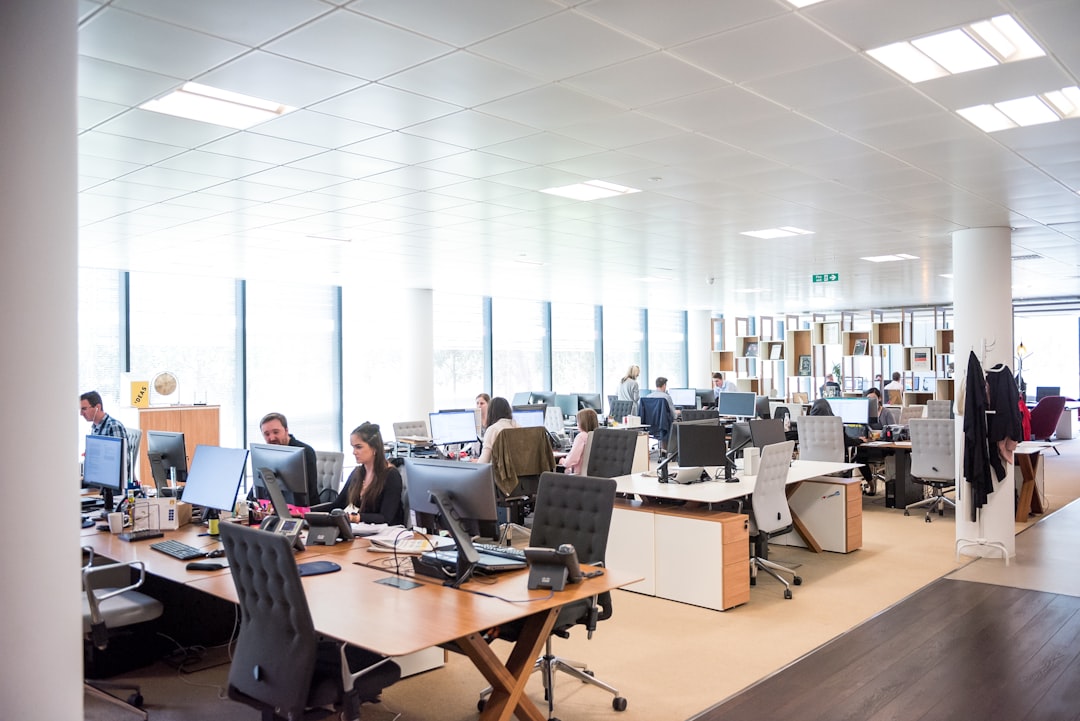
Hey Guys,
It’s been a while since I covered WFH, remote work and the RTO situation of the future of work. It’s kind of a toss up in the Summer of 2022. Hear me out.
Major American banks and BigTech firms mostly want employees back at the office. Around 50% of corporate America wants employees back at the office five days a week. Around 70% of Americans now work at least one day a week at the office. A lot can change in a recession.
Leaders think that remote workers and WFH or even hybrid work degrades innovation, teamwork and company culture. What do you think, is that true?
I can understand that in some sectors like financial services or more traditional companies that are large like Apple or Google might want the majority of people in the office, most of the time.
In 2021, there was a Microsoft study that claimed working from home threatens productivity and innovation. Meanwhile younger companies like Airbnb, Shopify and others are embracing WFH as a cost saving tactic where the average employee is technically more productive.
However for some individuals there’s some looming indicators it may not be good for mental health and burnout. A new survey from Gallop showed a large majority of Americans who typically work in an office or at a computer are still working from home amid the COVID-19 pandemic, as of May. However in June, it seems up to 70% of employees are back, and some believe they are back for good.
It seems Corporate America and executives are incredibly divided even in 2022 about WFH, hybrid work and the impact on their bottom lines. There’s some indications that for younger employees and women being in the office offers more career opportunities.
The Microsoft Study
Microsoft's peer-reviewed study, published in the journal Nature Human Behaviour, covers 61,000 employees. It looked at anonymized data of their working patterns starting December 2019---before the lockdowns---up to June 2020.
The researchers concluded that the shift to company-wide remote work caused the collaboration network to become more siloed, with workers less likely to communicate with those in other departments. Microsoft said collaboration time employees spent with other groups dropped by about 25% compared to pre-pandemic levels.
While this is intuitive it’s surprising it came from Microsoft who were a huge beneficiary of the WFH movement with Teams and other products.
Data on what Americans Prefer
Bloom (2021) reports that 47% of American workers prefer to work in a hybrid model, 21% want to return to the office full time, and 32% want to stay fully remote.
The average number of days Americans workers want to work from home (among those who can work from home) is around 2.8 as of March 2022 (Barrero et al. 2022).
So it sounds as if most employees want balance, neither too extreme remote work or too much commuting into the office.
In a global survey, 21% of respondents who had quit their jobs in 2021 reported doing so because of lack of flexible working hours or location (Microsoft WTI 2022).
There’s a growing amount of evidence that show younger workers are even more pro remote work. Employees value flexibility in work location at non-trivial percentages of their salary, e.g., approx. 9% in one recent survey of U.S. workers who have worked from home during COVID (Barrero et al. 2021) and 8% in a pre-pandemic controlled experiment (Mas & Pallais 2017).

The Revenge of RTO
Yet in mid 2022 many employers are being more strict on RTO even at the expense of talent.
Meanwhile many Americans are actually thinking: “I don’t gain anything besides a commute.”
The majority of Americans don’t work from home, but among those who do, there’s a battle going on about where they’ll work in the future. And it’s not just people who enjoy remote work who are upset about the return to the office.
Think about it though, even RTO isn’t the same any more or at least, not yet. People who couldn’t wait to go back are not finding the same situation they enjoyed before the pandemic, with empty offices and fewer amenities. Some companies sold their HQ and no longer even have physical offices. Those tend to be the firms young people actually want to work for one day.
In a Glint (2021) survey of LinkedIn members, top concerns flagged by employees about working even partly outside of the office include lower socialization (61%) and lower visibility to leadership (42%). When a constant hopping of jobs is less of an option, RTO might be a necessity to keep one’s job in some industries and across some companies.
There has been a major increase in employer acceptance of hybrid work, but employees still want more flexibility than employers are planning. This is creating confusion, mistrust and a rebellion against leaders who are becoming fixated on RTO or else!
Even with Teams and Zoom and other software, many leaders and corporate operations managers are worried. "Without intervention, the effects we discovered have the potential to impact workers' ability to acquire and share new information across groups, and as a result, affect productivity and innovation," Microsoft wrote in an accompanying post.
Productivity, Well-Being and Innovation
For some roles, hybrid work may not be sufficient when hyper collaboration is required. Productivity cannot be reduced to a single dimension (or metric), so frameworks include multiple dimensions. Performance/Outcomes, Collaboration, and Efficiency are examples of potential dimensions to consider (Forsgren et al. 2021). Often causal relationships can only be established with intermediate or proxy variables.
Even a few months of post-pandemic glee and heat are getting much of the workforce back to the office. That's setting up tension with those employees who don't want to go back to the way things were — but who will have to adjust if that's what they must do. This preserves the Great Resignation quit rates even as the labor market is showing some signs of change in some sectors.
After two years of working from home – and seeing return-to-office plans derailed by new Covid-19 variants – a growing number of companies are eager to get employees back to the office. Many are making it mandatory. There’s obviously a blue collar to white collar divide here with in some places the computer, media, finance and insurance industries, are still seeing at least 80 percent of workers clocking in remotely, most of the time.
Elon Musk can force RTO on his manufacturing workforce at Tesla, but fire some of his prospective Twitter staff as unnecessary. It’s a symbol of the times and in a sense of a bifurcation of two Americas. Those who said they prefer hybrid — 60 percent of office workers — are not always getting the interactions with colleagues they’d hoped for. Many firms are neither here nor there, where the best of both worlds is less than the sum of their parts.
For real innovation to occur, there’s something however magical about teamwork. No Teams meeting or Metaverse hang-out can replace physical proximity for bouncing off ideas, brainstorming and planning a pivot. Managers are more likely to define productivity as outcomes, and individual contributors are more likely to define productivity as output (Storey et al. 2021). Productivity is something that happens over time, and choosing a specific time interval is yet another dimension (Smith et al. 2021).
The evidence from attempts to measure short-term productivity following the onset of widespread remote work paints a mixed picture, with output per unit time potentially differing from self-reported productivity. The data on mental health and burnout rates are also mixed and may depend on the type of job, the amount of hybrid and many other variables.
In a large global survey, 80% of employees reported being as or more productive since going remote, but 54% of business leaders reported fearing that productivity was negatively affected since the shift (Microsoft WTI 2022). It make take a recession for leaders to win with their RTO obligations, bringing people back to the urban centers they once left, hoping it could be forevermore.
But the cognitive dissonance of RTO after years of WFH, and not everyone is sure RTO is actually working in 2022. The return to the office isn’t working for some firms and employs and it’s likely numerous.
Bosses and employees have different understandings of what the office is for, as well as differences by generation, gender and levels of introversion. As more and more knowledge workers return to the office, their experience at work — their ability to focus, their stress levels, their level of satisfaction at work — has according to some actually deteriorated.
After everything we’ve been though, it’s not clear if WFH and the great resignation has brought us a deeper appreciation of human contact and teamwork, or made us strangely adverse to it. There are no easy answers in this on-going debate about the human aspect of the future of work.
Thanks for reading. If you want to support the channel I am making more content premium.




Is the pandemic unofficially...officially over? We should trust the science,...or should we trust ourselves?
There should be an equal sign somewhere... science = us AFTER ALL, experiment = WE The moral high ground needed in relation to the reason for implementing the vax, for that particular coronavirus.. should be equivalent to it's OWN philosophy. Did the words match the deeds? especially when words...and a little math, are used to excuse personal rights and liberties...YOUr grannie's great sacrifice for the common good? Utilitarianism aka Benthamite approach, consequentialism...FOR it to work as written, PROFIT should NOT be taken. That's like agreeing to have a convicted pedophile speed dial his best friend to look after YOUR children. TRUST the science? To be continued....
The question? Big Firms anti-WFH: It's either WFH.. keeping an eye on your kids and DOG -or- WTF: Back to work recounting the numbers of pages in your cookbook on account of the.. DOJ? ..or maybe Moloch and Mammon Monday's haven't been quite the same....? Like you have a choice....